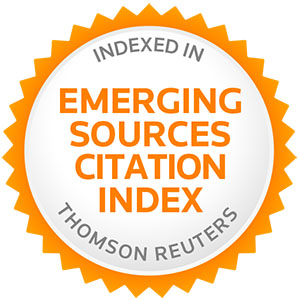Advances in Distributed Computing and Artificial Intelligence Journal
SIMULATION OF ROAD TRAFFIC APPLYING MODEL-DRIVEN ENGINEERING
SIMULATION OF ROAD TRAFFIC APPLYING MODEL-DRIVEN ENGINEERING
Authors:
Alberto FERNÁNDEZ-ISABEL, Rubén FUENTES-FERNÁNDEZ
DOI:
10.14201/ADCAIJ2015420124
Volume:
Regular Issue 4 (2), 2015
Road traffic is an important phenomenon in modern societies. The study of its different aspects in the multiple scenarios where it happens is relevant for a huge number of problems. At the same time, its scale and complexity make it hard to study. Traffic simulations can alleviate these difficulties, simplifying the scenarios to consider and controlling their variables. However, their development also presents difficulties. The main ones come from the need to integrate the way of working of researchers and developers from multiple fields. Model-Driven Engineering (MDE) addresses these problems using Modelling Languages (MLs) and semi-automatic transformations to organise and describe the development, from requirements to code. This paper presents a domain-specific MDE framework for simulations of road traffic. It comprises an extensible ML, support tools, and development guidelines. The ML adopts an agent-based approach, which is focused on the roles of individuals in road traffic and their decision-making. A case study shows the process to model a traffic theory with the ML, and how to specialise that specification for an existing target platform and its simulations. The results are the basis for comparison with related work.
Amditis, A., Pagle, K., Joshi, S., and Bekiaris, E., 2010. Driver–Vehicle–Environment monitoring for on-board driver support systems: Lessons learned from design and implementation. Applied Ergonomics, 41(2):225–235. http://dx.doi.org/10.1016/j.apergo.2009.03.002
Behrisch, M., Bieker, L., Erdmann, J., and Krajzewicz, D., 2011. Sumo-simulation of urban mobility-an overview. In SIMUL 2011, The Third International Conference on Advances in System Simulation, pages 55–60.
Bézivin, J., 2006. Model driven engineering: An emerging technical space. In Generative and Transformational Techniques in Software Engineering, pages 36–64. Springer. http://dx.doi.org/10.1007/11877028_2
Bresciani, P., Perini, A., Giorgini, P., Giunchiglia, F., and Mylopoulos, J., 2004. Tropos: An agent-oriented software development methodology. Autonomous Agents and Multi-Agent Systems, 8(3):203–236. http://dx.doi.org/10.1023/B:AGNT.0000018806.20944.ef
Burmeister, B., Haddadi, A., and Matylis, G., 1997. Application of multi-agent systems in traffic and transportation. In IEEE Transactions on Software Engineering, volume 144, pages 51–60. IET. http://dx.doi.org/10.1049/ip-sen:19971023
Crooks, A., Castle, C., and Batty, M., 2008. Key challenges in agent-based modelling for geo-spatial simulation. Computers, Environment and Urban Systems, 32(6):417–430. http://dx.doi.org/10.1016/j.compenvurbsys.2008.09.004
Czarnecki, K. and Helsen, S., 2006. Feature-based survey of model transformation approaches. IBM Systems Journal, 45(3):621–645. http://dx.doi.org/10.1147/sj.453.0621
Doherty, S. T., Andrey, J. C., and MacGregor, C., 1998. The situational risks of young drivers: The influence of passengers, time of day and day of week on accident rates. Accident Analysis & Prevention, 30(1):45–52. http://dx.doi.org/10.1016/S0001-4575(97)00060-2
Doniec, A., Mandiau, R., Piechowiak, S., and Espié, S., 2008. A behavioral multi-agent model for road traffic simulation. Engineering Applications of Artificial Intelligence, 21(8):1443–1454. http://dx.doi.org/10.1016/j.engappai.2008.04.002
Ehlert, P. A. and Rothkrantz, L. J., 2001. A reactive driving agent for microscopic traffic simulation. In http://dx.doi.org/10.1109/itsc.2001.948773
Fernandez-Isabel, A. and Fuentes-Fernandez, R., 2015. Developing an integrative Modelling Language for Federated Conference on, pages 1745–1756. IEEE. http://dx.doi.org/10.15439/2015f248
France, R. and Rumpe, B., 2007. Model-driven development of complex software: A research roadmap. In 2007 Future of Software Engineering, pages 37–54. IEEE Computer Society.
Fuentes-Fernández, R., Hassan, S., Pavón, J., Galán, J. M., and López-Paredes, A., 2012. Metamodels for role-driven agent-based modelling. Computational and Mathematical Organization Theory, 18(1):91–112. http://dx.doi.org/10.1007/s10588-012-9110-5
Gipps, P. G. and Marksjö, B., 1985. A micro-simulation model for pedestrian flows. Mathematics and computers in simulation, 27(2):95–105. http://dx.doi.org/10.1016/0378-4754(85)90027-8
Greenberg, H., 1959. An analysis of traffic flow. Operations Research, 7(1):79–85. http://dx.doi.org/10.1287/opre.7.1.79
Gronback, R. C. and Merks, E., 2008. Model-driven architecture at eclipse. The European Journal for the Janssen, M. A., 2005. Agent-based modelling. Modelling in Ecological Economics, pages 155–172.
Kent, S., 2002. Model driven engineering. In Integrated Formal Methods, pages 286–298. Springer. http://dx.doi.org/10.1007/3-540-47884-1_16
Lind, J., 2001. Issues in agent-oriented software engineering. In Proceedings of the First International Workshop on Agent-Oriented Software Engineering (AOSE), pages 45–58. Springer. http://dx.doi.org/10.1007/3-540-44564-1_3
Michon, J. A., 1985. A critical view of driver behavior models: what do we know, what should we do? In Object Management Group, 2003. eXtensible Modelling Language (XML), Version 1.1. http://www.omg.
Object Management Group, 2008. Software & Systems Process Engineering Meta-Model (SPEM), Version
Pappis, C. P. and Mamdani, E. H., 1977. A fuzzy logic controller for a traffic junction. Systems, Man and Cybernetics, IEEE Transactions on, 7(10):707–717.
Paruchuri, P., Pullalarevu, A. R., and Karlapalem, K., 2002. Multi agent simulation of unorganized traffic. In Proceedings of the First International Joint Conference on Autonomous Agents and Multiagent Systems: http://dx.doi.org/10.1145/544741.544786
Pavón, J., Gómez-Sanz, J. J., and Fuentes, R., 2005. The INGENIAS methodology and tools. Agent-Oriented Methodologies, 9:236–276. http://dx.doi.org/10.4018/978-1-59140-581-8.ch009
Rao, A. S. and Georgeff, M. P., 1992. An abstract architecture for rational agents. In Proceedings of Knowledge Representation and Reasoning (KR&R-92), volume 92, pages 439–449.
Rubel, D., Wren, J., and Clayberg, E., 2011. The Eclipse Graphical Editing Framework (GEF). Addison-Wesley Professional.
Schieber, R. A. and Thompson, N., 1996. Developmental risk factors for childhood pedestrian injuries. Injury Prevention, 2(3):228.http://dx.doi.org/10.1136/ip.2.3.228
Shinar, D., 1978. Psychology on the Road. The Human Factor in Traffic Safety. John Wiley & Sons.
Shoham, Y., 1993. Agent-oriented programming. Artificial Intelligence, 60(1):51–92. http://dx.doi.org/10.1016/0004-3702(93)90034-9
Steinberg, D., Budinsky, F., Merks, E., and Paternostro, M., 2008. EMF: Eclipse Modeling Framework. Pearson Education.
Tolujew, J. and Alcalá, F., 2004. A mesoscopic approach to modeling and simulation of pedestrian traffic flows. In Proceedings of the 18th European Simulation Multi-Conference, SCS International, Ghent, pages 13–16. Transport Systems Planning and Transport Telematics Group, Transport Planning Group and Senozon
Van Den Berg, M., Hegyi, A., De Schutter, B., and Hellendoorn, J., 2003. A macroscopic traffic flow model http://dx.doi.org/10.1109/cdc.2003.1273044
Van Der Hoek, W. and Wooldridge, M., 2008. Multi-agent systems. Foundations of Artificial Intelligence, 3:887–928. http://dx.doi.org/10.1016/S1574-6526(07)03024-6
Vasirani, M. and Ossowski, S., 2009. A market-inspired approach to reservation-based urban road traffic management. In Proceedings of The 8th International Conference on Autonomous Agents and Multiagent Systems-Volume 1, pages 617–624. International Foundation for Autonomous Agents and Multiagent Systems.
Wimmer, M. and Burgue-o, L., 2013. Testing M2T/T2M Transformations. In Model-Driven Engineering
















